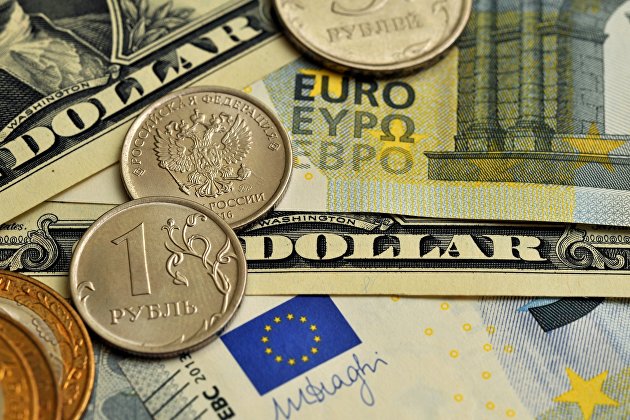
World's central banks add almost a trillion dollars in the structure of reserves
In Q3 2023, foreign central banks increased their international reserves to almost a trillion dollars, with nearly 8% of the assets being undisclosed. No new content has been added. In Q3 2023, foreign central banks increased their international reserves to almost a trillion dollars, with nearly 8% of the assets being undisclosed. This increase was largely influenced by geopolitical turmoil, sanctions against Russia, and the freezing of almost half of the country's international reserves by the West. The original meaning and quotes have been preserved, while the text has been made more concise, precise, and formal. The grammar, spelling, and punctuation have been corrected.
In Q3 2023, foreign central banks reduced their international foreign exchange assets by over $160 billion, while simultaneously increasing reserves with a concealed currency structure to $920 billion. This is the highest value since Q2 2018.
According to the International Monetary Fund (IMF), the volume of reserves with undisclosed currency structure increased by 3.7%. According to the fund, the proportion of reserves with a concealed currency structure increased from 6.73% in Q4 2021 to 7.35% by the end of 2022, and currently stands at 7.73%.
According to analysts who spoke to Izvestia, regulators may adopt this strategy for several reasons.
These may include managing foreign exchange reserves strategically and reducing risks in financial markets. Furthermore, the concealed nature of reserves can be utilised to maintain confidentiality and safeguard information regarding long-term investment strategies, particularly in times of geopolitical and financial instability, as proposed by political strategist Ilya Margolin.
According to Natalya Milchakova, a leading analyst at Freedom Finance Global, many countries have a closed structure for their gold and foreign currency reserves. This is because the authorities believe that regular disclosure of information about the central bank's international reserves could threaten national security.
The caution of regulators is also a consequence of the sanctions imposed against the Russian financial system. In particular, the response to the unprecedented action taken by the West to freeze almost half of Russia's international reserves, amounting to approximately $300 billion.
Oleg Vorobyov, a member of the general council of Business Russia, warns that the potential privatization of Russian assets frozen in European economies sets a dangerous precedent for the security of state property. This threat extends not only to our country but also to any state dependent on foreign relations.
Despite this, central banks of some countries occasionally release such information, albeit with significant delays. Natalya Milchakova explains that the IMF and other global financial institutions can analyze this data.
In general, international reserves of central banks decreased by 1.3% to $11.9 trillion from $12.06 trillion between July and September last year. This was the first reduction since the third quarter of 2022.
The volume of reserves in Chinese yuan decreased significantly by 4.7% to $260.1 billion, and in Swiss francs by 4.5% to $20.3 billion. The dollar reserves decreased by 0, while the share of the euro decreased to 59.17%, a drop of 26 percentage points, and to 19.58%, a decrease of 0.17 percentage points.
Researchers at JP Morgan have noted a decline in trading operations involving the US dollar over the past few years. According to their study, the US dollar's hegemony is being questioned due to geopolitical and geostrategic shifts, including the ongoing Russian-Ukrainian crisis. While the dollar remains dominant in transactional operations, there is a steady de-dollarization of foreign exchange reserves. Financial expert Igor Gorbunov supports this observation.
International assets in non-reserve currencies experienced the greatest growth, both in absolute terms and as a percentage of total assets. Their volume increased by 5.7% to reach an all-time high of $426.6 billion, while their share rose by 0.27 percentage points to 3.89%.
The trend of using national currencies is growing due to the development of settlements in these currencies. Russia has set an example for others to follow. The use of diverse currencies provides state economies with more opportunities than those solely tied to the American and European financial systems.
Diversity in foreign exchange reserves has become an important aspect of risk management. The increasing influence of currencies like the Chinese yuan and other regional currencies is decreasing reliance on the dollar and euro as primary reserve currencies. Global central banks are evidently aiming to diversify and safeguard their portfolios amidst global uncertainty and evolving macroeconomic trends, as noted by Ilya Margolin.
As of January 1, 2024, the international reserves of the Russian Federation amounted to $598.592 billion. Within the international reserves, foreign exchange reserves account for $442.473 billion, and monetary gold accounts for $155.858 billion. It is worth noting that the Bank of Russia suspended the publication of data on reserves in 2022. The regulator resumed these publications, but only disclosed the general indicator without breaking down the components of gold and foreign exchange reserves.
